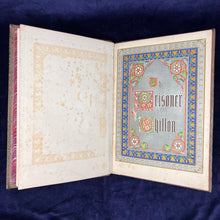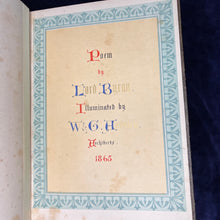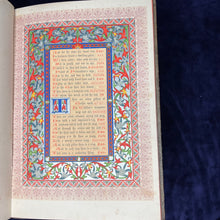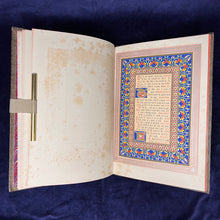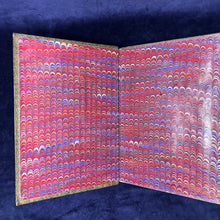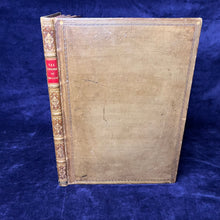
The Prisoner of Chillon. Poem by Lord Byron. Illuminated by W & G. Audsley Architects [London: Day & Son] 1865.
( 310 x 220 mm) 20 chromolithographed pages printed rectos only, unnumbered. Chromolithographed by W. R Tymms. 19th c. Marbled pastedown and fly leaves. Bound in full calf with gilt and blind tool stamping, gauffers. Armenian red fore-edges. Foxing throughout, but primarily on unillustrated versos. Overall VERY GOOD condition.
William Robert Tymms (1828-1878) was one of the foremost chromolithographers in the 1860s. This stunning edition of Byron’s Gothic work was produced during Tymm’s most celebrated decade and, indeed, the quality of his technical skill, artistry, and his re-imagining of the Medieval is on display. Artists, such as Owen Jones, in the 1840s and 1850s had perfected the artistic process of chromolithography, producing works intended for the conspicuous consumption of the Victorian upper-middle class. And the 1860s revelled in the difficult technique of illustrating on stone and laying laying down individual colors to produce these sumptuous works. Where Tymms learned his trade is unknown, but his career began in the 1850s and flourished onwards.
In the 1860s, he became the principal chromolithographer for the publisher Day and Son, known for their chromolithographic picture books.
Tymms’ task for the Prisoner of Chillon was to translate the ornate borders illustrated by the Scottish brothers, William James Audsley and George Ashdown Audsley, the founders of a Liverpool-based architectural firm which completed ten churches in the Gothic Revival Style.
Byron’s poem is the account of the monk, François Bonivard, who was imprisoned in Chillon and witnessed his father’s martyrdom and the subsequent deaths of each of his six brothers. The Gothic poem of several hundred lines is fit between Gothic-style borders, whose dissonance from true Gothic manuscript illuminations further enhances the out-of-time anachronism and fantasy of Byron’s poem.






